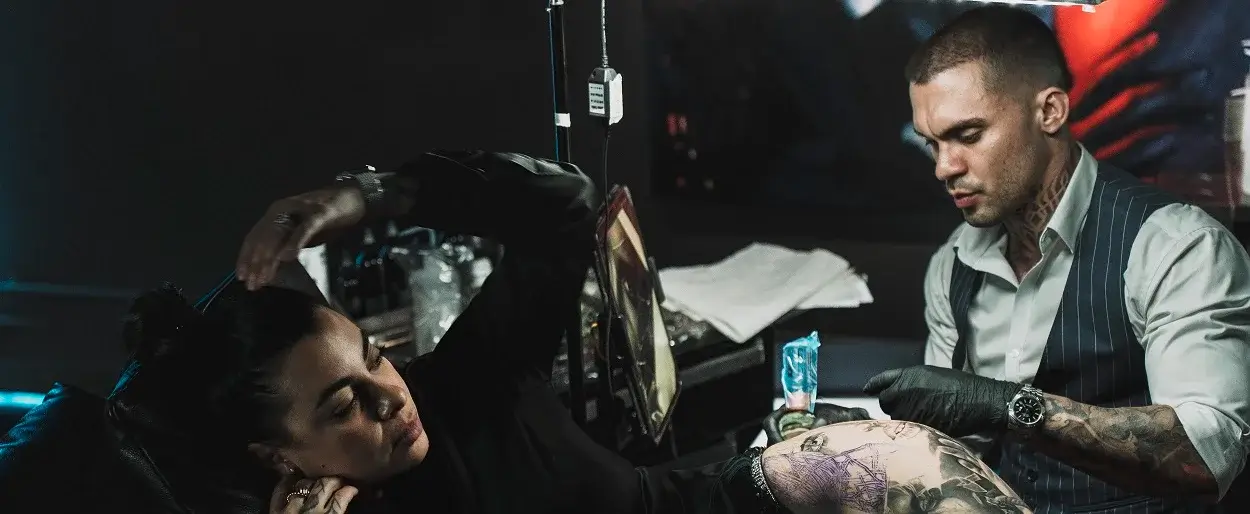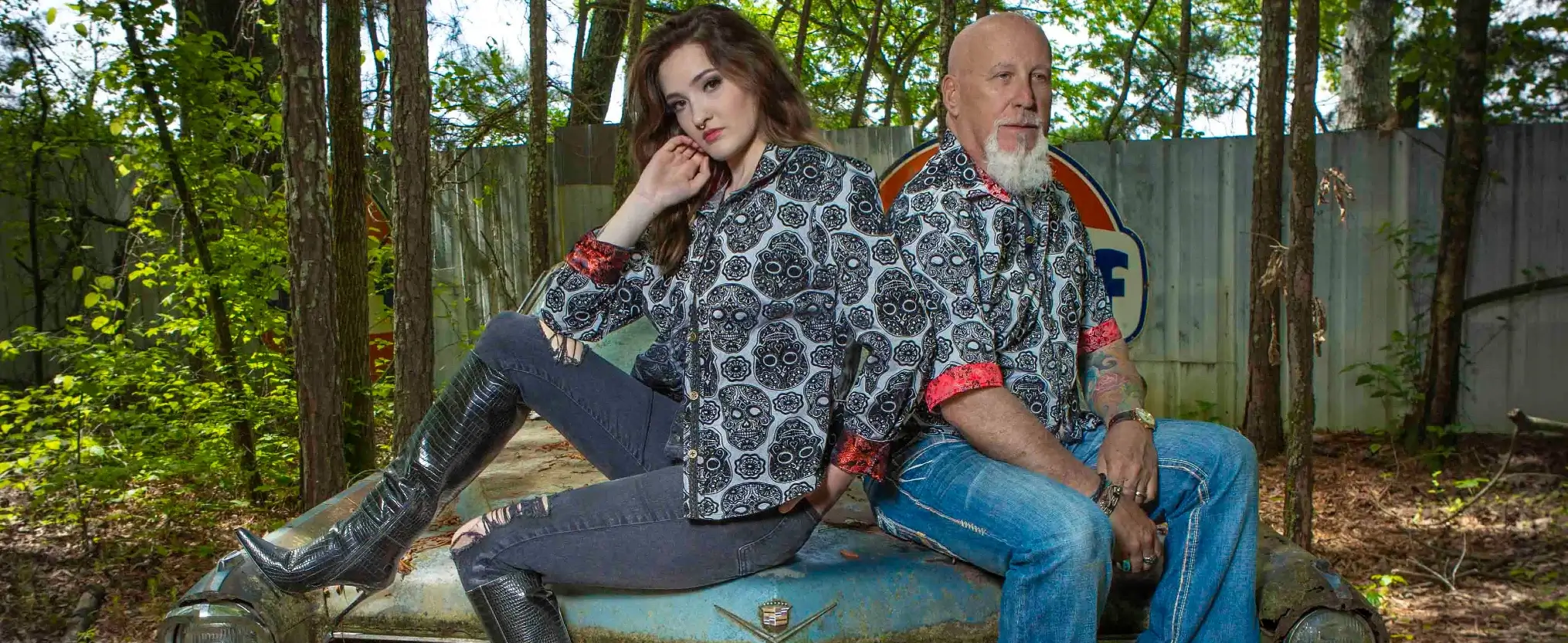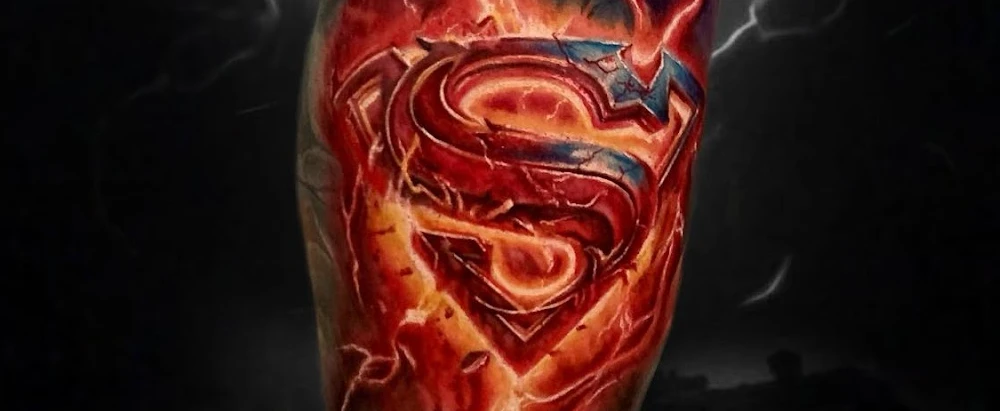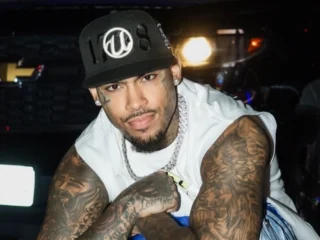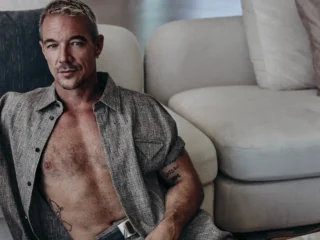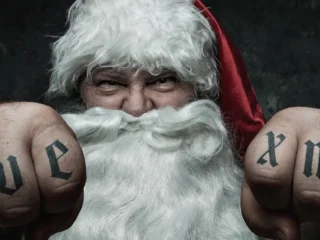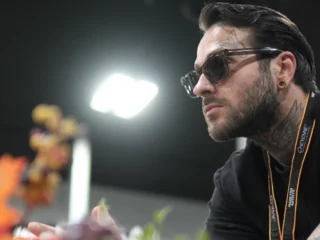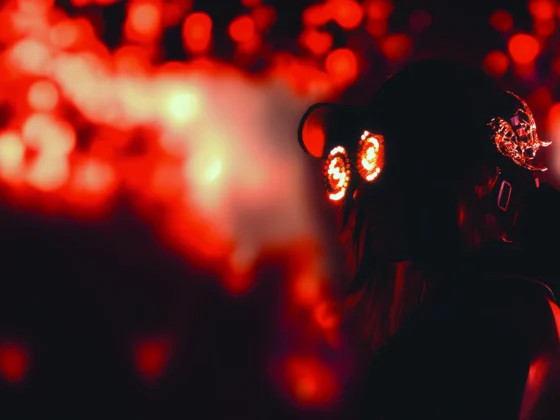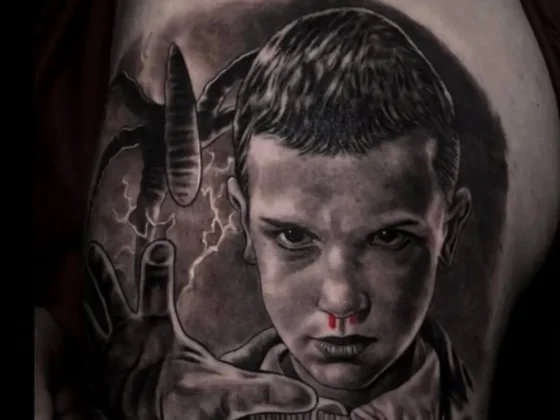Inked Mag Staff
August 13th, 2018
Tattooed In My Own Blood—L(INKED) to the Past
Understanding Otzi Through Ink Photos by TJ Proechel, Peter Roessler and South Tyrol Museum of Archaeology/Eurac/Samadelli/Staschitz The oldest naturally preserved mummy ever found, Ötzi the Iceman, was covered in tattoos.…
Understanding Otzi Through Ink
Photos by TJ Proechel, Peter Roessler and South Tyrol Museum of Archaeology/Eurac/Samadelli/Staschitz
The oldest naturally preserved mummy ever found, Ötzi the Iceman, was covered in tattoos. Visual artist Nicole Wilson adopts the same exact markings as the man born 5,000 years ago and reflects on how far we’ve come.
CLICK THE PHOTO BELOW TO WATCH THE VIDEO

Nicole Wilson walked into Three Kings Tattoo in Brooklyn, New York carrying two small vials of her own blood. Soon the blood would be tattooed into her skin, leaving behind the exact same marks as those found on Ötzi the Iceman.
Ötzi was discovered by hikers in the 1990s in the Ötzal Alps on the border of Austria and Italy. His body is covered in tattoos, well-preserved from being frozen in a glacier for thousands of years. Scientists dated him to 3300 BCE and through research have figured out intimate details of his 45 years on this planet: what he ate, what region he was from, and how he died.
Wilson, a visual artist living and working in Brooklyn, has always been drawn to the one thing that scientists cannot quite figure out—the meaning behind the mysterious tattoos covering his body. “The reason I’m so interested in Ötzi is because scientists were able to recreate his last meal, they were able to identify where he was from, identify all these things about him. But the one thing they can’t actually go back and tell the story of his tattoos,” she says. It was this that motivated Wilson to delve deeper into Ötzi. Although scientists have speculated what the tattoos mean, claiming they could be identificatory or medicinal, they are not able to come to any definite conclusions. “No amount of science will ever be able to reconstruct the story that tells us why these tattoos are on his corpse.”

Wilson, drawn to these marks found on the representative of early man, decided to recreate Ötzi’s marks on her own body. “Ötzi is an archeological figure, but he also can be translated into an archetypical male figure,” Wilson says. “My artwork at large is interested in challenging structures of power, especially male-centered and patriarchal. I became obsessed with the idea of taking Ötzi’s marks and making them mine. There was something deeply feminist and very empowering about doing this.” But she knew that simply tattooing them would be too easy, too direct a translation. She wanted to create a “cyclical process where I was marking myself with his images but through something that was mine and only mine and inherently mine, and then something that would become part of me and I would sort of swallow his marks.” So she tattooed the images onto herself using something produced by her body: her own blood. Through research, she found that blood contains a pigment called heme and, theoretically, the body reabsorbs its own blood. She called a friend with a tattoo machine and put the then-found 59 tattoos onto her body. The result was a series of dark pink scars (post-inflammatory hyperpigmentation); the color of the heme was visible underneath the skin as the body slowly broke down its pigment. The marks lasted about two years.
Although the tattoos faded, the project was far from over. Last year, Wilson found out that there were two more tattoos discovered on Ötzi’s body due to an advancement in photographic imaging techniques. She immediately knew she needed to do the project again and, this time, decided to collaborate with an artist. But finding an artist who would adhere to her unconventional requests was not easy. “I tried calling around to a couple of tattoo shops in Brooklyn and was met with a lot of, ‘I don’t want to do this,’ and also a lot of people telling me that it was a dumb idea, that it couldn’t be done, that I didn’t understand the process of tattooing.” After growing tired of negative reactions, she was told by a friend to reach out to Three Kings because they have a reputation for not shying away from the strange. So, Wilson paired up with Mat Moreno, an artist at Three Kings who has been tattooing for 11 years.

Moreno was more than willing to go through with Wilson’s request. He says, “When my manager first brought me the email and explained to me what the process was or what was being requested, I didn’t really blink an eye. Most people don’t know, I’m pretty goth. So anything with blood.” He was willing to try something new, although he was not sure if using blood instead of ink would ultimately be successful. And although he wasn’t familiar with Ötzi before taking the project, Moreno has always been drawn to archeology and history. “You know, I’m a big Indiana Jones fan,” he says. “The original movies—not the latest one.”
With an artist on board, the process of tattooing all 61 of the marks onto Wilson’s body started. Instead of drawing her own blood, like she did the first time, Wilson had a friend who is a nurse draw it for her. “I felt like it wouldn’t have been cool to pull out a knife in the middle of a tattoo shop and draw my own blood,” she explains.
Wilson and Moreno spent a lot of time making sure that the position of the tattoos on Wilson’s body correlated to where they are on Ötzi’s body using the published research from South Tyrol, Italy, where Ötzi’s body is preserved in an archaeological museum. The tattoos are groups of thin-lined hashes along the lower legs and spine. There are two more sets on the lower right ribs and the left wrist. They exist in groupings of no more than five and most are about an inch or two in length. There is also small square crosses on the back of the right knee and on the left ankle.
With the tattoos placed, Moreno filled the ink cap with blood, which he honestly admits made him “a little queasy.” The process, for the most part, was similar to that of a regular tattoo. Moreno says that “Yeah, there was blood. There was blood on the blood and the mark being made was like this washed-out red. And then the blood would kind of trickle up and bubble up afterward. There were a couple of spots I needed to hit another time, take another pass just to make sure that they stayed and that they were visible. But for the most part, you were able to see everything right as it was being done.” Despite Moreno’s uncertainty, it had worked. This time, all 61 of the marks found on Ötzi were on Wilson’s body. Her blood had seeped into her own skin, leaving behind the same marks that existed on a Neolithic man all those years ago.

At this moment Ötzi and Wilson’s tattoos were the oldest and newest on Earth.
Wilson feels connected to Ötzi through their tattoos. “Because there’s an actual physical thing to point to,” she says. “I feel like by mimicking the marks on his body, by taking his marks and marking myself with his marks, I am identifying with an early ancestor.” The transference made by the marks from his body to hers not only forges a connection between the two but also reinstates Wilson’s personal connection to the marks. She has taken these tattoos that belonged to him and made them her own, stating that she views them as art above all else. She’ll carry the marks with her as they grow lighter each day, as her body recognizes each tattoo as its own and absorbs it, as historical artifact becomes one with her body and they become just as much a part of her as they were of Ötzi.She says, “I’m purely, in a weird way, a piece of paper or something like that, that’s moving them through the world. I have other tattoos on my body that are my tattoos and yes, I know Ötzi’s marks are now on my body and they’re mine, but they’re also art at the same time. It’s my job to live with them as they fade and carry out this project.”
Editor's Picks
Bridging Classical Art and Modern Tattooing
Esteban Rodriguez brings the discipline of classical fine art to the living canvas of skin, creating hyper-realistic tattoos that merge technical mastery with emotional depth.
Show Your Ink Fashions Brings Custom Style to Tattoo Culture
Show Your Ink Fashions creates custom shirts designed to showcase your tattoos as wearable art, blending fashion with personal expression.
The Ultimate “Superman” Tattoo Roundup: Just in Time for Superman’s Return to Screens
With Superman’s big return to theaters, fans are revisiting some of the most iconic ink inspired by the Man of Steel.


